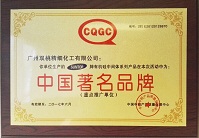
![]() E-mail: admin@gz-chemical.com
E-mail: admin@gz-chemical.com
Email us,best price and silane solutions for you!
Tel:+86 (20) 29035969

![]() E-mail: admin@gz-chemical.com
E-mail: admin@gz-chemical.com
Email us,best price and silane solutions for you!
Tel:+86 (20) 29035969


New research from the University of East Anglia reveals how soil bacteria build the only kno
wn enzyme for the destruction of the potent global warming and ozone-depleting gas nitrous
oxide.
Alongside carbon dioxide (CO2) and methane, the greenhouse gas nitrous oxide (N2O),
commonly known as 'laughing gas', is now a cause for great concern, and there is much
international focus on reducing emissions.
It is hoped that the findings, published today in the journal Chemical Science, will help pave
the way for strategies to mitigate the damaging effects of this climate changing gas.
N2O has around 300 times the global warming potential of CO2 and stays in the atmosphere
for about 120 years, where it accounts for around nine per cent of total greenhouse gas.
It also destroys the ozone layer with similar potency to the now banned chlorofluorocarbons
(CFCs).
Atmospheric levels of N2O are rising year on year as microorganisms break down synthetic
nitrogen fertilisers which are added to agricultural soil, to satisfy the food supply demands of
an ever-increasing global population.
Prof Nick Le Brun from UEA's School of Chemistry, said: "It is well known that some bacteria
can 'breathe' N2O in environments where oxygen (O2) is limited.
"This ability is entirely dependent on an enzyme called 'nitrous oxide reductase', which is the
only enzyme known to destroy N2O. It is therefore very important for controlling levels of this
climate-changing gas.
"We wanted to find out more about how soil bacteria use this enzyme to destroy nitrous oxide."
The part of the enzyme where N2O is consumed (called the 'active site') is unique in biology,
consisting of a complex arrangement of copper and sulfur (a copper-sulfide cluster). Until
now, knowledge of how this unusual active site is built by bacteria has been lacking.
The UEA team discovered a protein called NosL, which is required for the assembly of the
copper-sulfide cluster active site and makes the enzyme active.
They found that bacteria lacking NosL still produced the enzyme but it contained less of the
copper-sulfide active site. Furthermore, when the same bacteria were grown with copper in
short supply, the active site was completely absent from the enzyme.
The team also showed that NosL is a copper-binding protein, indicating that it functions
directly in supplying copper for the assembly of the copper - sulfide c luster active site.
Prof Le Brun said: "The discovery of the function of NosL is the first step towards
understanding how the unique active site of nitrous oxide reductase is assembled. This is key
information because when assembly goes wrong, inactive enzyme leads to release of N2O
into the atmosphere."
Guangzhou Double Peach Fine Chemical Co.,Ltd
Address: No 3401 Huangpu East Road, Huangpu District, Guangzhou, China
Tel:+86 (20) 29035969 Fax:+86(20)29035979
Tel/Wechat/Whatsapp:0086 13826126978 admin@gz-chemical.com